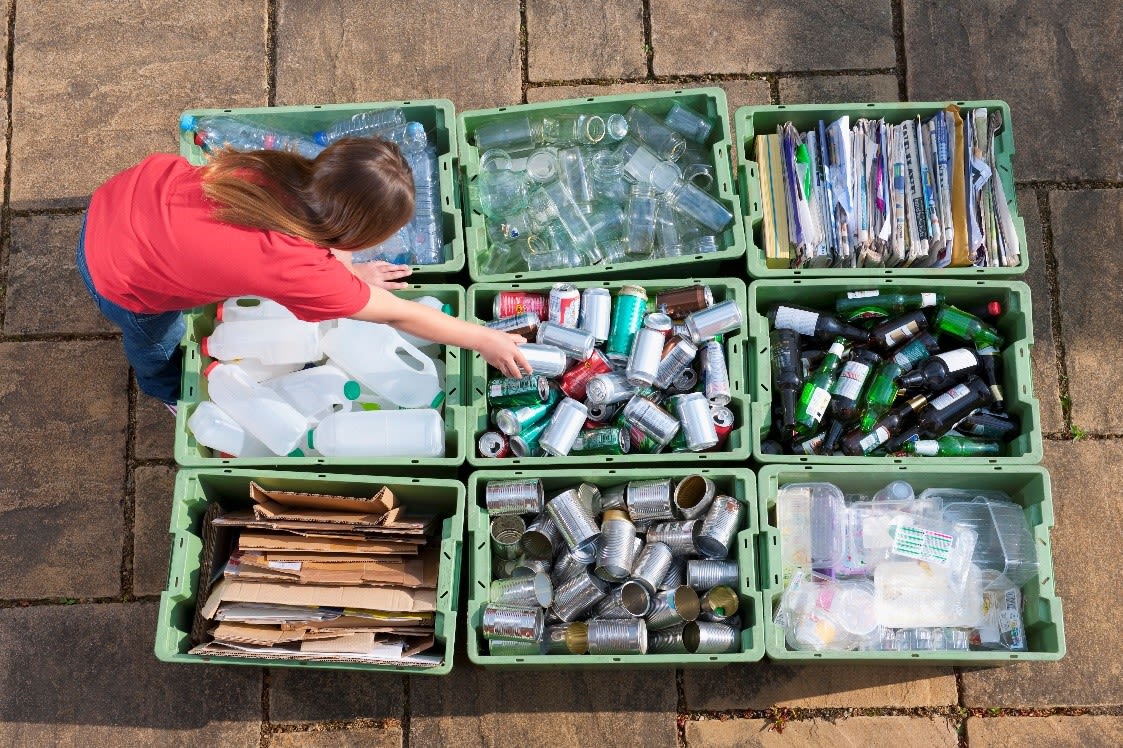The Circular Shift: Designing for Longevity, Efficiency, and Impact
What is Circularity?
 As the pressures of resource scarcity, climate change, and economic volatility intensify, businesses must rethink not just what they produce, but how they produce it. Enter circularity—a powerful framework that reimagines the entire lifecycle of a product, from design to end-of-life.
As the pressures of resource scarcity, climate change, and economic volatility intensify, businesses must rethink not just what they produce, but how they produce it. Enter circularity—a powerful framework that reimagines the entire lifecycle of a product, from design to end-of-life.
Circularity challenges the outdated “take-make-dispose” model of a linear economy. Instead of extracting finite resources, using them once, and discarding them, a circular approach keeps materials in use for as long as possible. Products are designed to be reused, refurbished, remanufactured, and ultimately recycled, minimizing waste and maximizing value.
Why is Circularity Important?
The case for circularity is no longer theoretical—it is urgent, strategic, and increasingly non-negotiable. Today, humans consume more natural resources than the Earth can regenerate each year. As of 2025, only 6.9% of the 100+ billion tons of materials entering the global economy are reused, a decline from 7.2% in 2023. This staggering imbalance is a key driver of climate change and underscores the urgent need to redesign systems around circular principles.
By rethinking how products are designed, used, and recovered, businesses can:
-
Cut emissions and meet climate targets more effectively.
-
Strengthen supply chain resilience by reducing dependence on virgin materials.
-
Lower operational costs through smarter resource use and waste reduction.
-
Stay ahead of regulations and align with evolving policy landscapes.
-
Meet rising consumer expectations for sustainability and transparency.
How does Circularity Work?
At Schneider Electric, we have developed a comprehensive, end-to-end circularity approach based on three key levers:
-
Use Better: Sourcing low carbon materials and minimizing waste during manufacturing.
-
Use Longer: Extending product life through maintenance, repair, and modernization.
-
Use Again: Recirculating materials via take-back, refurbishment, and resale programs.
Interested in learning more? Watch our video "
We are actively tackling the complexities of our own supply chain and have embedded circular practices across our business. As of Q1 2025, 40% of our product materials are green, with a target of 50% by year-end. We are also transforming our packaging: 80% of primary and secondary packaging is now free from single-use plastics, using recycled cardboard instead, with a goal of reaching 100% by the end of 2025. These actions demonstrate our commitment to circularity not just in theory, but in practice.
Now, through our circularity consulting services, we help other organizations do the same, applying our real-world experience to guide clients through their own circular transformation:
-
Assess: We begin by evaluating your current practices, benchmarking against industry peers, and identifying key partners for lifecycle assessments and environmental product declarations. We also conduct avoided carbon assessments to quantify the potential impact of circular strategies.
-
Design: Next, we help embed circular principles into your product development and supply chain strategy. This includes applying eco-design principles, selecting sustainable materials, and developing an end-to-end roadmap to reduce Scope 3 emissions.
-
Expand: Finally, we support the implementation of pilot projects, develop digital tools and playbooks, and help you track and communicate progress through clear KPIs and business metrics.
Who are Ideal Candidates for Circularity Services?

Our circularity consulting services are crafted for B2B industrial organizations ready to lead in sustainability and operational transformation. Companies that have made public commitments, taken steps to reduce Scope 3 emissions, or already collaborate with Schneider Electric on other initiatives are especially well-positioned to gain value from our circularity expertise.
Our Circularity Services are particularly impactful for businesses aiming to future-proof their operations, navigate increasingly complex regulatory landscapes, and meet the rising expectations of customers and stakeholders for sustainable, circular products.
Case Study: Digital Realty
 Schneider Electric recently deepened our long-standing partnership with Digital Realty to launch a pioneering circular economy initiative at the PAR5 data center in Paris. This collaboration is designed to extend the lifecycle of mission-critical electrical infrastructure, including low- and medium-voltage equipment, switchgear, and three-phase UPS systems, through a comprehensive strategy of reuse, refurbishment, recycling, and digitization. A key innovation is the industry-first battery rejuvenation assessment, aimed at extending the life of VRLA UPS batteries, alongside the progressive replacement of SF6-containing switchgear with Schneider Electric’s SF6-free SM AirSeT technology. In its early phase, the project had already delivered 3.7 tons of CO₂ savings through UPS modernization and infrastructure upgrades. It also includes take-back, recycling, and responsible disposal programs to reduce e-waste and Scope 3 emissions, while enhancing equipment resilience and performance through the EcoStruxure Service Plan.
Schneider Electric recently deepened our long-standing partnership with Digital Realty to launch a pioneering circular economy initiative at the PAR5 data center in Paris. This collaboration is designed to extend the lifecycle of mission-critical electrical infrastructure, including low- and medium-voltage equipment, switchgear, and three-phase UPS systems, through a comprehensive strategy of reuse, refurbishment, recycling, and digitization. A key innovation is the industry-first battery rejuvenation assessment, aimed at extending the life of VRLA UPS batteries, alongside the progressive replacement of SF6-containing switchgear with Schneider Electric’s SF6-free SM AirSeT technology. In its early phase, the project had already delivered 3.7 tons of CO₂ savings through UPS modernization and infrastructure upgrades. It also includes take-back, recycling, and responsible disposal programs to reduce e-waste and Scope 3 emissions, while enhancing equipment resilience and performance through the EcoStruxure Service Plan.
This is a scalable model. With ambitions to replicate and expand across Digital Realty’s European sites, the program is expected to help avoid 50–70% of embodied carbon in key electrical systems over the next 3–5 years.
As data center growth accelerates, this initiative exemplifies how embedding circular economy principles into a company’s operations can lead to more sustainable, resource-efficient practices long-term.
In Conclusion
By embracing circularity, your organization can reduce costs, drive innovation, and lead the way in building a more resilient and circular future.
If you are ready to take the next step, contact us today to schedule a Circularity Assessment and begin building your roadmap toward a smarter, more sustainable business.
To find out more about how to enhance your business with end-to-end circularity, visit here.